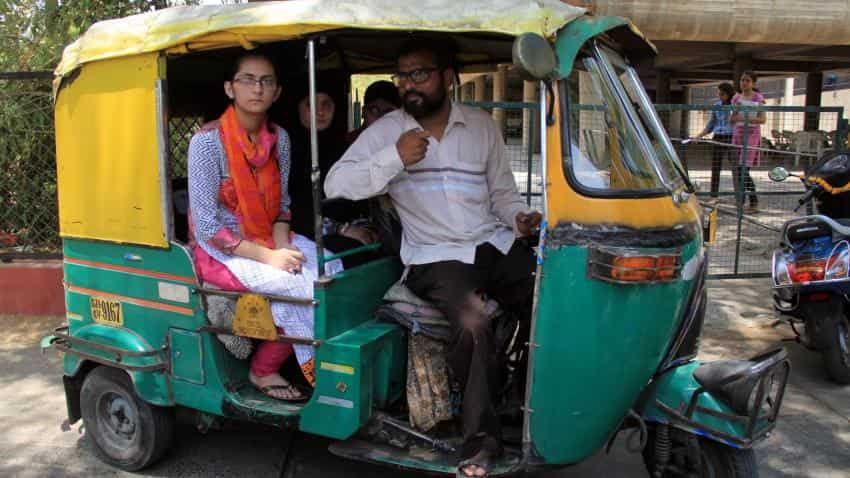Ola, Uber see growing demand for auto-rickshaws as cab supply declines
The crippling driver strikes at the beginning of 2017 has provided the boost for the auto-rickshaw category to evolve and become a large part.

Key highlights:
- Auto-rickshaw category has become now a crucial part of the online commute booking market
- Total auto-rickshaw rides delivered by online players has increased by a massive 250%
- It now makes up 10% of the online commute booking market
While driver strikes have crippled online cab aggregators such as Uber and Ola, the players are however seeing a greater demand for auto-rickshaws. The auto-rickshaw category has grown to become now a crucial part of the online commute booking market.
While the online auto-rickshaw market has historically operated in stops and starts, the crippling driver strikes at the beginning of 2017 provided the right tipping point for this nascent category to evolve, according to a RedSeer Consulting report.
The total auto-rickshaw rides delivered by online players has increased by a massive 250% in Q3 2017.

Source: RedSeer Consulting
While the total auto-rickshaw rides by online players was 5.5 million in Q3 2016 it has grown significantly to 18.5 million in Q3 2017.
In fact, auto-rickshaw bookings made on online taxi-hailing apps have now amounted to a significant 10% of the total rides, including cabs, car-pooling shuttle buses, etc.
While the auto-rickshaw segment was a mere 3% of the online commute booking market in Q3 2016, it now makes up 10% and the rest 90% is the booking of cabs, car-pooling and others.
Ola Cabs was one of the first to start with the auto-rickshaw booking service on their app and others followed.
One of the main reasons for the growth in auto-rickshaw online booking is due to the lucrative offers.
The report says that lucrative offers such as Rs 29 fare for less than 4 km travel distance for this category has resulted in a growth of 3 times in the last one year.
However, this may be a good option for Ola and Uber especially in the Northern suburbs of Mumbai and in other cities such as Delhi and Bengaluru as cab supply is expected to persist.
The registered cab supply in Q2 2017 has declined to nearly 3 lakh from nearly 5 lakh cabs in Q4 2016, said a recent RedSeer report.
The reason for this was the cutting of incentives, commission rates and higher working hours that were not rolled back even after the cab drivers went on strike several times.
Despite several driver strikes during the year, online cab aggregators seem focused on key profitability by way of reducing driver incentives. Driver incentives of online cab aggregators, such as Uber and Ola, have seen a large decline from Q1 2017 to Q2 2017.
Driver incentives have plummeted from nearly 80% in Q2 2016 to nearly 20% in Q2 2017. This is a drop of nearly 60% in driver incentives in the just a matter of 1 year.
ALSO READ:
Get Latest Business News, Stock Market Updates and Videos; Check your tax outgo through Income Tax Calculator and save money through our Personal Finance coverage. Check Business Breaking News Live on Zee Business Twitter and Facebook. Subscribe on YouTube.
RECOMMENDED STORIES

Power of Compounding: How long it will take to build Rs 5 crore corpus with Rs 5,000, Rs 10,000 and Rs 15,000 monthly investments?

Small SIP, Big Impact: Rs 1,111 monthly SIP for 40 years, Rs 11,111 for 20 years or Rs 22,222 for 10 years, which do you think works best?

SBI 444-day FD vs PNB 400-day FD: Here's what general and senior citizens will get in maturity on Rs 3.5 lakh and 7 lakh investments in special FDs?

Looking for short term investment ideas? Analysts suggest buying these 2 stocks for potential gain; check targets
02:14 PM IST









 Driver incentives of Uber, Ola in Q2 plummet as profitability remains key focus
Driver incentives of Uber, Ola in Q2 plummet as profitability remains key focus Cab supply of Uber, Ola drop as drivers continue to leave over unfulfilled demands
Cab supply of Uber, Ola drop as drivers continue to leave over unfulfilled demands Uber, Ola bookings bounce back post driver strikes
Uber, Ola bookings bounce back post driver strikes Car-pooling service see growth in demand as Uber, Ola push for shared mobility
Car-pooling service see growth in demand as Uber, Ola push for shared mobility To compete with Uber, Ola raises over Rs 1,600 crore in fresh funding from SoftBank
To compete with Uber, Ola raises over Rs 1,600 crore in fresh funding from SoftBank